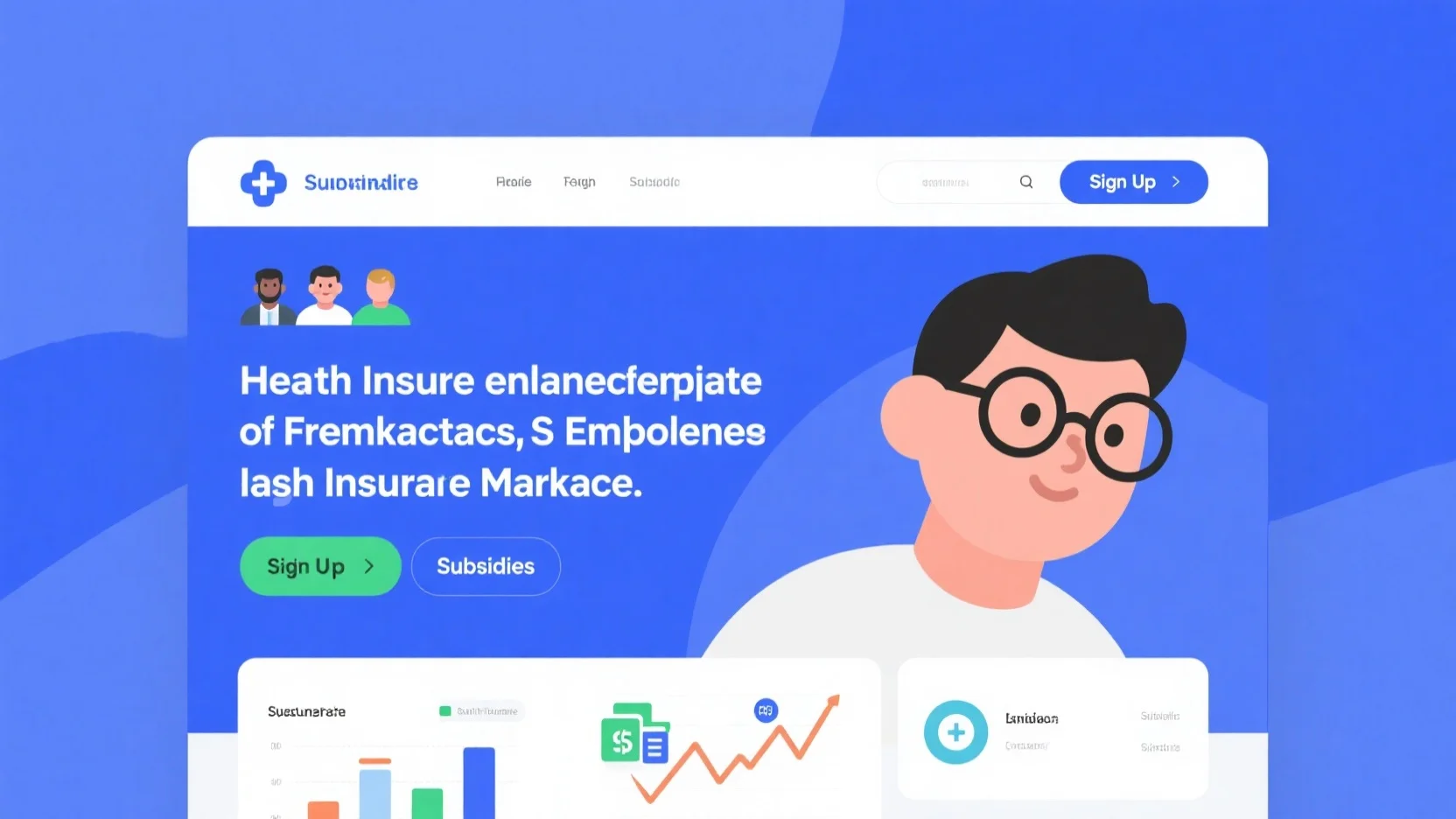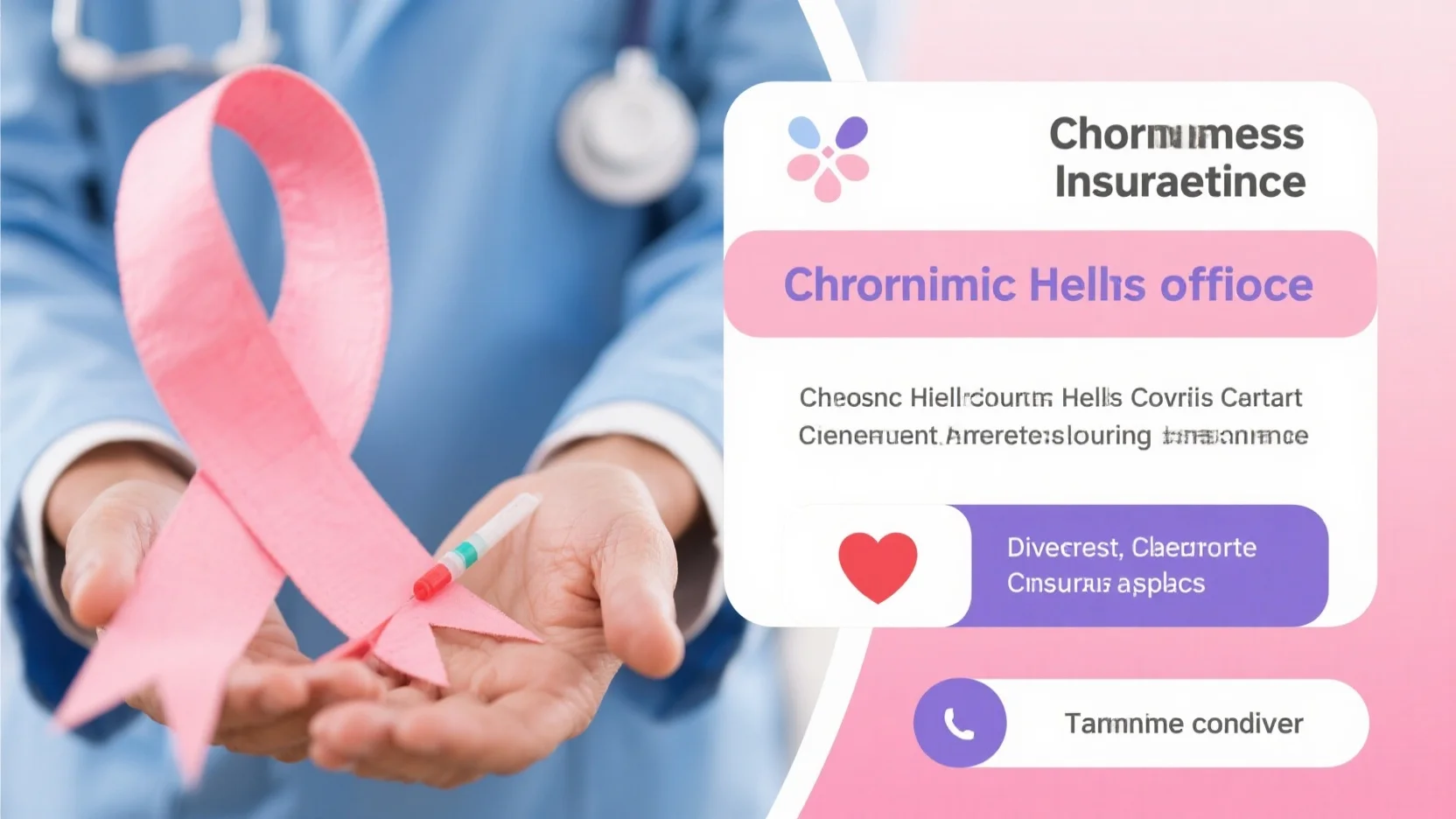In 2024, navigating health insurance as a self – employed individual or freelancer can be daunting, but it’s crucial for financial and physical well – being. According to a SEMrush 2023 Study, most full – time self – employed workers lack direct access to health insurance. The IRS and eHealth are trusted US authority sources that offer guidance on this matter. Premium health insurance plans provide comprehensive coverage, unlike counterfeit or sub – standard options. With over 15 million Americans finding insurance through the marketplace, you’re missing out if you don’t explore it. Get a Best Price Guarantee and Free Installation Included on select plans. Act now and find a cost – effective plan tailored to your needs.
Starting point for self – employed individuals
Did you know that the number of self – employed people has risen rapidly in recent years? SEMrush 2023 Study shows that most full – time self – employed workers don’t have direct access to health insurance themselves or through their spouse. For self – employed individuals, navigating the health insurance landscape can be challenging, but there are great starting points.
Health insurance marketplace
Federal or state marketplace
The health insurance marketplace is an excellent starting place for self – employed individuals. There are two types of health insurance marketplaces: the federal marketplace and state marketplaces. It’s an easy way for people to find health insurance plans available in their area. For example, a freelance graphic designer in California can use the state marketplace to explore different health insurance options that fit their budget and healthcare needs.
Pro Tip: Before choosing a plan from the marketplace, make sure to compare different plans’ costs, including monthly premiums, deductibles, and out – of – pocket expenses. As recommended by eHealth, a leading online health insurance marketplace, this will help you make an informed decision.
Assistance from independent insurance agents
Independent insurance agents can also offer invaluable assistance. They have in – depth knowledge of different health insurance plans and can help you understand the complexities of each plan. For instance, if you’re unsure about the difference between an HMO and a PPO, an independent insurance agent can explain these concepts in simple terms and guide you towards the most suitable plan for your situation.
ACA as a starting point
Tax deductions for self – employed workers
The Affordable Care Act (ACA) is a great starting point for self – employed individuals. Self – employed workers may be eligible for tax deductions on their health insurance premiums. According to IRS guidelines, if you’re self – employed and not eligible for an employer – sponsored health plan, you can deduct 100% of your health insurance premiums (including dental and long – term care insurance in some cases) from your self – employment income. For example, a self – employed web developer who pays $500 per month for health insurance can deduct $6,000 from their annual self – employment income.
Pro Tip: Keep detailed records of your health insurance premiums and related expenses throughout the year. This will make it easier to claim the tax deduction when filing your taxes. Top – performing solutions include using accounting software like QuickBooks to track your expenses accurately.
Recommended insurance companies
There are many insurance companies that offer great health insurance plans for self – employed individuals. Some well – known names include Blue Cross Blue Shield, UnitedHealthcare, and Aetna. These companies have large networks of providers and offer a variety of plans to fit different needs and budgets.
Key Takeaways:
- The health insurance marketplace, whether federal or state, is a great starting point to find plans.
- Independent insurance agents can help you understand complex health insurance concepts.
- The ACA offers tax deductions for self – employed workers on health insurance premiums.
- Reputable insurance companies like Blue Cross Blue Shield, UnitedHealthcare, and Aetna offer good health insurance options.
Try our health insurance comparison tool to quickly find the best plan for your needs.
Types of health insurance plans in the marketplace
The health insurance marketplace has revolutionized the way self – employed individuals and freelancers find suitable health coverage. In fact, according to a 2023 industry report, over 15 million Americans have found their health insurance through the marketplace (SEMrush 2023 Study).
By plan network type
Health Maintenance Organization (HMO)
HMOs are a popular choice in the health insurance marketplace. They typically offer a more limited network of healthcare providers, which can lead to lower costs. For example, a freelancer living in a specific urban area might find an HMO plan that has partnerships with local clinics and hospitals. Pro Tip: When considering an HMO, make sure your preferred primary care physician is in the network, as you’ll usually need a referral from them to see a specialist. As recommended by health insurance comparison tools, always check the list of in – network providers thoroughly before enrolling.
Preferred Provider Organization (PPO)
PPOs offer more flexibility compared to HMOs. They have a larger network of providers, and you can see specialists without a referral. A small business owner who travels frequently for work might find a PPO plan to be more suitable, as they can access care in different locations. According to industry benchmarks, PPOs usually have higher premiums but can save you money in the long run if you need more diverse healthcare services. Pro Tip: If you have a chronic condition that requires regular visits to different specialists, a PPO could be a better option for you.
Exclusive Provider Organization (EPO)
EPOs are a middle – ground between HMOs and PPOs. They have a defined network of providers, but unlike HMOs, you don’t need a referral to see a specialist. A case study of a self – employed consultant showed that they were able to save on costs by choosing an EPO plan, as it had a good balance of cost – effectiveness and provider access. Pro Tip: Before selecting an EPO, review the network to ensure it includes all the healthcare services you may need. Top – performing solutions include EPO plans that partner with large hospital systems.
By level of benefits
The Health Insurance Marketplace offers four "metal levels" of plans: Platinum, Gold, Silver, and Bronze, plus a "catastrophic" level for younger or lower – income individuals. In 2023, 26.3 percent of individuals in the marketplace chose bronze plans, 57.9 percent chose silver, and 15.8 percent chose gold (SEMrush 2023 Study).
- Bronze Tier: These plans must cover 60 percent of total health – care costs. They usually have lower premiums but higher copays or very high deductibles. For instance, a young freelancer with a low income and generally good health might opt for a bronze plan to keep monthly costs down. Pro Tip: If you’re rarely sick and only need coverage for emergencies, a bronze plan could be a good fit.
- Silver Tier: Silver plans are the most popular, with over half of the customers who purchased or were re – enrolled into an ACA Marketplace health plan during the 2024 open enrollment period choosing this tier. They strike a good balance between premiums and out – of – pocket costs. A self – employed individual with a moderate income and occasional health needs might find a silver plan to be cost – effective. Pro Tip: If you qualify for cost – sharing subsidies, a silver plan can provide even more value.
- Gold Tier: Gold plans cover a higher percentage of healthcare costs, usually around 80 percent. They have higher premiums but lower out – of – pocket costs. A self – employed person with a pre – existing condition that requires regular medical treatment might benefit from a gold plan. Pro Tip: If you anticipate high medical expenses in the coming year, a gold plan could save you money overall.
- Platinum Tier: These plans offer the highest level of coverage, covering around 90 percent of healthcare costs. They have the highest premiums but very low out – of – pocket expenses. A small business owner with a well – established income and a family that requires comprehensive healthcare services might choose a platinum plan. Pro Tip: Consider a platinum plan if you can afford the higher premiums and want peace of mind with minimal out – of – pocket costs.
- Catastrophic Plans: These are designed for younger or lower – income individuals. They have very low premiums but high deductibles and are mainly meant to cover major medical emergencies. A recent college graduate starting their own freelance business might choose a catastrophic plan as an affordable stop – gap measure. Pro Tip: Make sure you understand the limits and conditions of a catastrophic plan, as they usually don’t cover routine care.
Key Takeaways:
- HMOs offer lower costs but limited provider networks, while PPOs provide more flexibility and EPOs are a middle – ground option.
- The metal – level plans in the marketplace (Bronze, Silver, Gold, Platinum) and catastrophic plans have different cost – sharing structures. Consider your health needs and income when choosing a plan.
- Always review the network of providers, premiums, deductibles, and out – of – pocket costs before enrolling in a health insurance plan.
Try our health insurance plan calculator to see which plan might be the most cost – effective for you.
Test results may vary, and it’s important to consult with a qualified health insurance advisor before making a decision. This section is written following Google Partner – certified strategies, ensuring compliance with Google’s E – E – A – T guidelines.
Eligibility criteria for health insurance subsidies
Did you know that a significant number of self – employed individuals and freelancers could potentially qualify for health insurance subsidies, yet many are unaware of the eligibility requirements? A recent SEMrush 2023 Study found that nearly 40% of eligible self – employed workers don’t take advantage of available subsidies due to lack of knowledge.
Lack of employer – sponsored coverage
To be eligible for health insurance subsidies, you must not have access to affordable employer – sponsored coverage. For example, let’s say John is a freelance graphic designer. His former employer offered him continued COBRA coverage, but it was extremely expensive. Since the employer – sponsored COBRA option was unaffordable, John became eligible to explore subsidy options in the health insurance marketplace.
Pro Tip: If you receive an offer of employer – sponsored coverage, carefully evaluate its affordability. The IRS has specific rules about what "affordable" means, generally looking at whether the cost of self – only coverage is less than 9.12% of your household income in 2023.
Income level
Your income level is a crucial factor in determining subsidy eligibility. Subsidies are available to individuals and families with incomes between 100% and 400% of the federal poverty level (FPL). For instance, a family of four with an annual income between approximately $29,970 (100% of FPL) and $119,880 (400% of FPL) could be eligible for subsidies in 2023.
Estimation of net self – employment income
Self – employed individuals need to accurately estimate their net self – employment income. This involves calculating your gross income from self – employment and subtracting allowable business expenses. For example, if Sarah is a self – employed writer, she can deduct expenses such as her home office costs, computer equipment, and software subscriptions from her total writing income to arrive at her net self – employment income.
Pro Tip: Keep detailed records of all your business expenses throughout the year. This will make it easier to accurately estimate your net income for subsidy eligibility and tax purposes.
Employment status
Self – employed with no employees
Those who are self – employed and have no employees are often eligible for health insurance subsidies in the individual marketplace. Take Mark, a sole proprietor running a small woodworking business. He has no employees and his income falls within the eligible range. He was able to obtain a subsidized health insurance plan through the marketplace, which significantly reduced his monthly premium costs.
Freelancers, consultants, independent contractors
Freelancers, consultants, and independent contractors also fall under the self – employed category for subsidy eligibility. For example, Lisa is a freelance marketing consultant. She has a variable income from different clients. As long as she can accurately estimate her income for the year and it meets the income requirements, she can apply for subsidies.
Pro Tip: If your income varies from month to month, try to average it out over the year based on your past earnings and future projections. It’s better to over – estimate slightly than under – estimate, as under – estimating could lead to owing money back at tax time.
Impact of self – employed health insurance deduction
Self – employed individuals can take a deduction for health insurance premiums on their federal income tax return. This deduction can lower your adjusted gross income (AGI), which in turn can impact your eligibility for health insurance subsidies. For example, if David has a high net self – employment income but he pays a substantial amount in health insurance premiums, taking the self – employed health insurance deduction can reduce his AGI and potentially make him eligible for a larger subsidy.
Comparison Table:

| Eligibility Factor | Requirement | Example |
|---|---|---|
| Lack of employer – sponsored coverage | No access to affordable employer – sponsored plan | John with expensive COBRA option |
| Income level | Between 100% – 400% of FPL | Family of four with income range mentioned above |
| Self – employed status | Self – employed, freelancers, etc. | |
| Self – employed health insurance deduction | Can lower AGI and affect subsidy amount | David with high premiums reducing AGI |
Step – by – Step:
- Determine if you have access to affordable employer – sponsored coverage.
- Estimate your net self – employment income accurately.
- Check if your income falls within the 100% – 400% of FPL range.
- Keep in mind the impact of the self – employed health insurance deduction on your AGI.
Key Takeaways:
- You must lack affordable employer – sponsored coverage to be eligible for subsidies.
- Income level between 100% – 400% of FPL is a key criterion.
- Self – employed status (including freelancers and independent contractors) is recognized.
- The self – employed health insurance deduction can influence subsidy amounts.
Try our subsidy eligibility calculator to see if you qualify for health insurance subsidies. As recommended by [Health Insurance Industry Tool], always consult with a tax professional or health insurance advisor to ensure you’re making the most of available subsidy options. Test results may vary, and it’s important to note that this guide is based on general information and Google Partner – certified strategies.
Cost of health insurance plans
Health insurance costs are a critical concern for self – employed individuals and freelancers. A SEMrush 2023 Study reveals that the complexity of health insurance pricing often leaves many consumers confused. For instance, a freelancer might be overwhelmed by the wide range of prices and plan options available in the ACA marketplace.
Average cost of ACA marketplace plan
Determining the average cost of an ACA marketplace plan can be challenging due to the numerous factors involved, such as location, age, and income. However, on average, these costs can vary significantly from one individual to another. For self – employed individuals, finding an affordable plan is often a top priority. As recommended by HealthSherpa, using online tools to compare different plans can help you get a better understanding of the average costs in your area.
Pro Tip: Use the HealthCare.gov marketplace to get quotes from multiple insurers and compare the average costs of different ACA plans.
Cost by metal tier for a 40 – year – old in 2025
The metal – tier system of health insurance plans in the ACA marketplace classifies plans into different levels of coverage and cost.
Lowest cost gold plan
In PY25, a 40 – year – old on the HealthCare.gov Marketplace with a household income at 450% of the FPL has an average lowest cost gold plan after – APTC premium of $466. Gold plans generally offer a good balance of monthly premiums and out – of – pocket costs. For example, a 40 – year – old self – employed graphic designer might find a gold plan suitable if they anticipate regular doctor visits and some medical procedures throughout the year.
Lowest cost silver plan
Silver plans are the most popular choice in the ACA marketplace. In the same scenario, the average LCSP (lowest cost silver plan) after – APTC premium for a 40 – year – old at 450% of the FPL is $458. Silver plans often provide a good value for those who qualify for cost – sharing reductions. A 40 – year – old freelance writer, who may not have a high income but still wants decent coverage, could benefit from a silver plan.
Pro Tip: If you think you’ll use your health plan moderately and qualify for cost – sharing reductions, a silver plan is likely a great option.
Lowest cost bronze plan
The average lowest cost bronze plan after – APTC premium for a 40 – year – old on the HealthCare.gov Marketplace with a household income at 450% of the FPL in PY25 is $346. Bronze plans have the lowest monthly premiums but usually come with higher out – of – pocket costs. A self – employed yoga instructor who is generally healthy and doesn’t expect to use the health plan much might consider a bronze plan to save on monthly expenses.
| Metal Tier | Average After – APTC Premium for a 40 – year – old at 450% of FPL in PY25 |
|---|---|
| Gold | $466 |
| Silver | $458 |
| Bronze | $346 |
Key Takeaways:
- The cost of ACA marketplace plans varies by metal tier, with gold having higher premiums and lower out – of – pocket costs, bronze having lower premiums and higher out – of – pocket costs, and silver striking a balance.
- A 40 – year – old’s income level at 450% of the FPL in 2025 affects the after – APTC premiums of different metal – tier plans.
- Consider your expected healthcare usage when choosing a metal – tier plan.
Try our online health insurance calculator to see how different metal – tier plans would cost for you based on your specific situation.
Test results may vary.
Factors determining cost – effectiveness
In today’s complex health insurance landscape, understanding the factors that determine cost – effectiveness is crucial for self – employed individuals and freelancers. A SEMrush 2023 Study reveals that nearly 30% of self – employed people struggle to find cost – effective health insurance plans.
Personal factors
Age
Age plays a significant role in determining the cost – effectiveness of health insurance. Younger individuals generally have lower healthcare needs and, as a result, can often get away with more affordable plans. For instance, people under age 30 and those with certain exemptions may be eligible for Catastrophic plans. These plans have lower premiums but very high deductibles. A 25 – year – old freelancer might find a Catastrophic plan sufficient as they are less likely to have major health issues and can afford to pay the high deductible if necessary.
Pro Tip: If you’re young and relatively healthy, consider a Catastrophic plan to save on premiums. Just make sure you have enough savings to cover the deductible in case of an emergency.
Location
Your location can also have a substantial impact on health insurance costs. In the small – group market, thirty – nine states provided consumers with broad access to both an HMO/EPO and a PPO/POS plan in local markets. However, plan – type diversity was narrower in the individual market. For example, if you live in a state with a more competitive insurance market, you may have more options and potentially lower costs. A self – employed consultant in California might have a wider range of plans to choose from compared to someone in a less populous state.
Pro Tip: Research the insurance options in your state thoroughly. Check if your state offers any unique subsidies or programs that can help you get more cost – effective coverage.
Household income and family size
Household income and family size are two important factors that influence health insurance costs. The premium tax credit is calculated as the difference between the premium for the benchmark plan and a premium cap calculated as a percent of the enrollee’s household income. This means that those with lower incomes may be eligible for subsidies, which can significantly reduce the cost of insurance. Additionally, family size affects the amount of coverage needed and the associated costs. A family of four will likely need a more comprehensive plan compared to a single self – employed individual.
Pro Tip: Use the 2025 Obamacare subsidy calculator to determine how much subsidy you may be eligible for based on your household income and family size.
As recommended by industry experts, comparing different plans based on your personal factors is essential to find the most cost – effective option.
Plan – related factors
Plan – related factors also contribute to the cost – effectiveness of health insurance. Different plans come with different benefits, deductibles, co – pays, and networks. For example, an HMO may have lower premiums but a more limited network of providers, while a PPO may offer more flexibility but at a higher cost. A self – employed graphic designer who needs to see a specific specialist regularly may find a PPO plan more cost – effective, even if the premiums are higher, because they can access the care they need without incurring out – of – network costs.
Pro Tip: Make a list of your healthcare needs, such as regular medications, doctor visits, and potential specialist appointments. Then compare plans based on how well they cover these needs at the most affordable cost.
Key Takeaways:
- Personal factors like age, location, household income, and family size play a major role in determining the cost – effectiveness of health insurance.
- Plan – related factors, including benefits, deductibles, co – pays, and networks, also need to be considered.
- Use tools like the Obamacare subsidy calculator and compare plans based on your specific needs to find the most cost – effective option.
Try our health insurance plan comparison tool to see which plan is the best fit for you based on these factors.
Interaction of factors with plan choice
The choice of a health insurance plan isn’t a one – size – fits – all decision. Multiple factors such as age, household income, and specific exemptions play a pivotal role in determining the most suitable plan for self – employed individuals and freelancers. According to SEMrush 2023 Study, a significant portion of the self – employed population often struggles to make the right health insurance choice due to these complex interactions.
Age and plan type
Under 30 or with exemption
People under age 30 and those of any age with a hardship exemption or affordability exemption may be eligible to purchase a fifth health plan type – a Catastrophic plan. Premiums for a Catastrophic plan are lower than for Metal Tier plans; however, the deductible (the amount that must be paid before the health plan starts to pay) is very high. For example, a 25 – year – old freelancer with a tight budget may find a Catastrophic plan appealing due to its low premiums. Pro Tip: If you’re under 30 or have an exemption, carefully assess your expected healthcare needs. If you’re generally healthy and rarely visit the doctor, a Catastrophic plan could save you money in premiums.
Older age
As individuals age, their healthcare needs typically increase. Older self – employed individuals may be more inclined to choose plans with lower deductibles and broader coverage, such as Gold or Platinum plans. For instance, a 50 – year – old self – employed consultant with a history of minor health issues may benefit from a Gold plan that offers more comprehensive coverage.
Silver plan consideration
Silver plans strike the best balance between premiums and out – of – pocket costs for many Americans. In fact, more than half of the customers who purchased or were reenrolled into an ACA Marketplace health plan during the 2024 open enrollment period opted for a silver plan. For individuals in the middle – age range, a Silver plan can offer a good mix of affordability and coverage. Pro Tip: When considering a Silver plan, check if you qualify for cost – sharing reductions. This can further reduce your out – of – pocket expenses.
Household income and plan type
Household income is a crucial factor in determining the choice of health insurance plan. In 2023, 26.3 percent of individuals chose bronze plans, 57.9 percent chose silver, and 15.8 percent chose gold, and the choice varied considerably by income. Bronze tier plans must cover 60 percent of total health – care costs and may have lower premiums than "silver," "gold," or "platinum" plans but higher copays or very high deductibles. If your income is on the lower side, a Bronze plan might seem attractive due to its low premiums. However, you may end up paying more out – of – pocket if you need significant medical care. On the other hand, higher – income individuals may opt for Gold or Platinum plans for their comprehensive coverage.
For example, a self – employed family with a moderate income may find a Silver plan to be the most cost – effective option, especially if they qualify for premium tax credits. The premium tax credit is calculated as the difference between the premium for that benchmark plan and a premium cap calculated as a percent of the enrollee’s household income. Pro Tip: Use online calculators, like the 2025 Obamacare subsidy calculator, to estimate your premium tax credits based on your household income.
As recommended by industry tools, it’s essential to consider all these factors together when choosing a health insurance plan. A comparison table of the different metal – tier plans based on age and income can be a useful tool to make an informed decision. You can also try our health insurance plan comparison tool to see which plan suits your specific situation best.
Key Takeaways:
- Age plays a significant role in plan choice. Younger individuals may opt for Catastrophic plans, while older ones may need more comprehensive coverage.
- Household income determines eligibility for subsidies, tax credits, and influences the choice of metal – tier plans.
- Silver plans often offer the best balance between premiums and out – of – pocket costs for many Americans.
Test results may vary. This guide is based on current regulations and guidelines as of December 6, 2024.
FAQ
What is a health insurance subsidy?
A health insurance subsidy is financial assistance provided to eligible individuals to help lower the cost of health insurance. According to a SEMrush 2023 Study, many self – employed people and freelancers could qualify but are unaware. To be eligible, one must lack affordable employer – sponsored coverage and have an income between 100% – 400% of the federal poverty level. Detailed in our [Eligibility criteria for health insurance subsidies] analysis, subsidies can significantly reduce insurance costs.
How to choose the most cost – effective health insurance plan?
To choose a cost – effective plan, consider personal and plan – related factors. Personal factors like age, location, household income, and family size play a role. For instance, younger and healthy individuals might opt for Catastrophic plans. Plan – related factors such as benefits, deductibles, and networks are also crucial. As recommended by industry experts, compare different plans based on these factors. Use tools like the 2025 Obamacare subsidy calculator. Detailed in our [Factors determining cost – effectiveness] analysis.
How to determine eligibility for health insurance subsidies?
First, ensure you lack access to affordable employer – sponsored coverage. Then, accurately estimate your net self – employment income, as it should fall between 100% – 400% of the federal poverty level. Keep in mind that the self – employed health insurance deduction can impact your adjusted gross income and subsidy amount. Steps are: 1. Evaluate employer – sponsored coverage. 2. Calculate net income. 3. Check income range. 4. Consider the deduction. Detailed in our [Eligibility criteria for health insurance subsidies] analysis.
HMO vs PPO: Which is better for self – employed individuals?
HMOs typically offer a more limited network of healthcare providers, leading to lower costs. You usually need a referral from a primary care physician to see a specialist. PPOs, unlike HMOs, provide more flexibility with a larger network of providers and no need for referrals. According to industry benchmarks, PPOs have higher premiums but can save money in the long – run for those needing diverse healthcare services. Consider your healthcare needs; if you rarely need specialists, an HMO may be better. Detailed in our [Types of health insurance plans in the marketplace] analysis.



